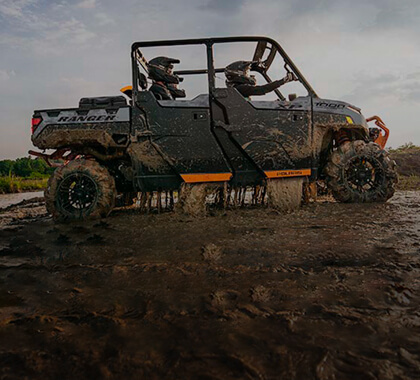Like exhaust backfires, water can also mess with your machine if it gets in the intakes. It can splash in the belt intake -- getting into the belt housing -- up the exhaust, and into pretty much any exposed intake line or intake valve. Even if you don’t go into deep puddles and never get water above the floorboards, it can still infiltrate your machine through the intakes and wreak havoc on the engine, clutch, and countless other components. Thankfully, there are many ways to snorkel the intakes of the Polaris General. Rather than bringing the snorkel lines into the cab or out of the rear panel, some General owners chose to extend the OEM intakes up front and go just below the top of the bed with the belt exhaust/side cvt intake in the rear. They do this because it allows them to easily return their rig to stock if they choose to. However, if you run the snorkel lines out the front and over the hood, you’re machine’s vent lines still might get inundated with water because the front end always drops first before it comes back up in deep water -- and that’s why most General owners usually always run the vent lines out the back. But no matter how you decide to do it, putting snorkels on your intake valves definitely give you added insurance and peace of mind -- even if you have no intentions of putting them to the test. If you want to protect or replace your machine’s vents, just give us a holler and we’ll sort you out in no time.





